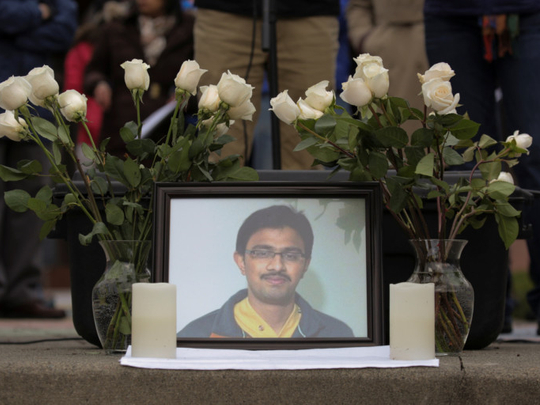
Racial attacks against Indians in the United States are not new. Indians for long have been branded as “creepers”, who leave behind their country in search of better lifestyle and most importantly money, are taunted for their funny accents, wear strange outfits, eat really spicy food, with strange pungent spices.
However, the murder of Srinivas Kuchibhotla, on February 22 in Kansas and now the death of Harnish Patel, the owner of a convenience store in Lancaster County, South Carolina, is a tipping point for most of the middle class Indian. Both in many ways personified the ethos of the ‘Indian American dream’, of making it big regardless of his or her background, race, and religion. Patel embodied the age-old middle-class belief in progress through education and a rise in the social hierarchy for him and his family.
Racism is an ugly human trait of isolating an individual based on his race and skin colour. This comes from a psychological bias of branding people based on social and physiological differences. In spite of such skirmishes, America always has been and still is the greatest draw for immigrants from all over the world, as there are no barriers in social hierarchy, with the country providing everyone the freedom to achieve success and prosperity through hard work.
This ethos of the American dream has been well cherished and utilised by millions all over the world, especially Indian techies ever since the information technology wave swept the country two decades ago. Over the years, Indian-Americans have achieved great success, being at the helm of several companies including Mastercard, PepsiCo, Google, Citibank and several others. They have dominated fields such as technology, scientific research, medicine, journalism and thrived in industries such as hospitality, transportation and real estate. Americans with Indian origins have been governors and have held positions of power in Washington.
A detailed look into the demographics of this group that has and is willing to migrate to the US tells a story of its own. Most of them hold master’s degrees, are skilled, ambitious, risk takers, proficient in English and are keen to adopt and learn fast. In India, they are sub-divided into regional biases like Gujarati, Tamil, Punjabis and Bengalis and further sub-divided as Hindus, Muslims, male and female. However, in US everyone is American and this unleashes their entrepreneurial spirit.
In spite of such resounding success of the community, the deaths have rattled the Indian middle class like no other as they know that the attack on them could have easily occurred to their children. It only adds to angst over the ongoing uncertainty over the immigration policy that President Donald Trump had been promising since his campaign days. It is an uncertainty millions of Indians would not like to live with as it affects their social hierarchy over dollar earnings and even marriage proposals.
Indian IT companies heavily depend on two categories of visas to send workers to the US: the L-1, which allows a temporary intra-company transfer of a foreign worker to the US, and the H-1B, which lets the holder work in the US for up to six years and also change jobs. According to a report by the department of homeland security, the US approved 315,857 H1-B visas in the financial year 2013-14, of which 220,286 were given to workers from India. In addition, roughly 166,000 Indians study in the US.
Srinivas is possibly the first fatal victim of racial tensions since Trump took office this year. However, anecdotal evidence points to a far-reaching sense of uncertainty among the 3-million plus Indian Americans, many of whom are nervous about moving around freely in recent weeks. Post on social media of T-shirts stating ‘DON’T SHOOT INDIAN. VISA EXPIRES IN THREE MONTHS’ is just the kind of nervousness that people are stating. Several civil rights groups report that the total number of hate groups in America have grown from 892 in 2015 to 917 in 2016. It recorded a sharper 197 per cent rise in the number anti-Muslim groups, 101 in 2016 compared to 34 the year before. Several incidents of bullying and abuse targeting Indian Americans have surfaced too.
The fear of being attacked may be agonising for millions of Indians but the bigger fear lies for America. The fear of not being the leader of the free world, the fear of not being free and the fear of letting the American dream go sour for thousands.
Archisman Dinda is a freelance journalist based in Kolkata, India








